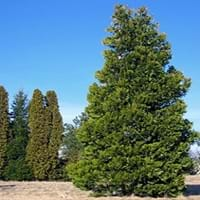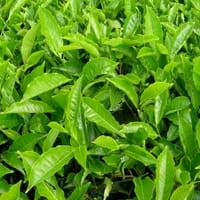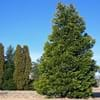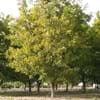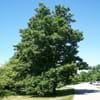Life Span
Annual and Perennial
Not Available
Origin
Western United States, California, Mexico
China
Types
Not Available
Camellia sinensis var. sinensis
Camellia sinensis var. assamica
Number of Varieties
Not Available
Habitat
low mountains, Mountain tops, Subtropical climates, Temperate Regions
Hillside, Mountain Slopes, Subtropical climates, Tropical regions
USDA Hardiness Zone
5-8
7-9
Sunset Zone
1a, 1b, 2a, 2b, 3a, 3b, 4, 5, 6, 7, 8, 9, 10, 11, 12, 14, 15, 16, 17, 18, 19, 20, 21, 22, 23, 24
H1, 4, 5, 6, 7, 8, 9, 12, 14, 15, 16, 17, 18, 19, 20, 21, 22, 23, 24
Habit
Upright/Erect
Oval or Rounded
Flower Color
Non Flowering Plant
White, Yellow
Flower Color Modifier
Bicolor
Bicolor
Fruit Color
Sandy Brown
Black
Leaf Color in Spring
Green
Green, Dark Green
Leaf Color in Summer
Green
Dark Green
Leaf Color in Fall
Green
Dark Green
Leaf Color in Winter
Green
Dark Green
Plant Season
Spring, Summer, Fall, Winter
Fall, Winter
Sunlight
Full Sun, Partial Sun
Partial Sun
Type of Soil
Loam, Sand
Loam
The pH of Soil
Acidic, Neutral
Acidic, Neutral
Soil Drainage
Well drained
Well drained
Bloom Time
Not Available
Fall, Late Fall, Early Winter
Tolerances
Drought
Not Available
Where to Plant?
Ground
Ground
How to Plant?
Stem Planting
Seedlings, Stem Planting
Plant Maintenance
Medium
Medium
Watering Requirements
Needs less watering, Water occasionally
Keep ground moist, Prefer drip-irrigation instead of Over-head watering, Requires a lot of watering, Water when soil is dry
In Summer
Lots of watering
Lots of watering
In Spring
Moderate
Moderate
In Winter
Average Water
Average Water
Soil pH
Acidic, Neutral
Acidic, Neutral
Soil Type
Loam, Sand
Loam
Soil Drainage Capacity
Well drained
Well drained
Sun Exposure
Full Sun, Partial Sun
Partial Sun
Pruning
Prune if you want to improve plant shape, Remove damaged leaves, Remove dead branches, Remove dead leaves
Generally pruned to waist height, Remove damaged leaves, Remove dead leaves, Remove dead or diseased plant parts
Fertilizers
No fertilizers needed
All-Purpose Liquid Fertilizer
Pests and Diseases
Insects
Caterpillars, Moth, Red blotch
Plant Tolerance
Drought
Not Available
Flower Petal Number
Not Available
Single
Fragrant Bark/Stem
Yes
No
Foliage Texture
Medium
Medium
Foliage Sheen
Matte
Glossy
Attracts
Birds
Not Available
Allergy
no allergic reactions
Not Available
Aesthetic Uses
Showy Purposes
Not Used For Aesthetic Purpose
Beauty Benefits
Not Available
Not Available
Environmental Uses
Air purification
Air purification
Medicinal Uses
Stomach pain
Diabetes, High cholestrol, Kidney Stones, Parkinson
Part of Plant Used
Bark, Leaves
Leaves
Other Uses
Making Perfumes, Used in pencil industry
Preferably used as black tea, Used for producing cooking oil, Used in making beverages
Used As Indoor Plant
No
No
Used As Outdoor Plant
Yes
Yes
Garden Design
Screening / Wind Break, Shade Trees, Street Trees
Container, Edible, Feature Plant, Foundation, Hedges
Botanical Name
CALOCEDRUS decurrens
CAMELLIA sinensis
Common Name
Incense Cedar
Tea, Tea Camellia
In Hindi
Incense Cedar
चाय के पौधे
In German
Zeder
Teepflanze
In French
Encens Cedar
usine de thé
In Spanish
cedro de incienso
planta del té
In Greek
θυμίαμα Κέδρος
φυτό του τσαγιού
In Portuguese
cedro de incenso
planta do chá
In Polish
kadzidło Cedar
Herbata roślin
In Latin
incensum Cedar
Tea herba
Phylum
Tracheophyta
Tracheophyta
Class
Pinopsida
Magnoliopsida
Family
Cupressaceae
Theaceae
Genus
Calocedrus
Camellia
Clade
Not Available
Angiosperms, Asterids, Eudicots
Tribe
Not Available
Not Available
Subfamily
Not Available
Not Available
Number of Species
Not Available
Not Available
Importance of Incense Cedar and Tea Plant
Want to have the most appropriate plant for your garden? You might want to know the importance of Incense Cedar and Tea Plant. Basically, these two plants vary in many aspects. Compare Incense Cedar and Tea Plant as they differ in many characteristics such as their life, care, benefits, facts, etc. Every gardener must at least have the slightest clue about the plants he wants to plant in his garden. Compare their benefits, which differ in many ways like facts and uses. The medicinal use of Incense Cedar is Stomach pain whereas of Tea Plant is Diabetes, High cholestrol, Kidney Stones and Parkinson. Incense Cedar has beauty benefits as follows: Not Available while Tea Plant has beauty benefits as follows: Not Available.
Compare Facts of Incense Cedar vs Tea Plant
How to choose the best garden plant for your garden depending upon its facts? Here garden plant comparison will help you to solve this query. Compare the facts of Incense Cedar vs Tea Plant and know which one to choose. As garden plants have benefits and other uses, allergy is also a major drawback of plants for some people. Allergic reactions of Incense Cedar are no allergic reactions whereas of Tea Plant have Not Available respectively. Having a fruit bearing plant in your garden can be a plus point of your garden. Incense Cedar has no showy fruits and Tea Plant has no showy fruits. Also Incense Cedar is not flowering and Tea Plant is not flowering . You can compare Incense Cedar and Tea Plant facts and facts of other plants too.
